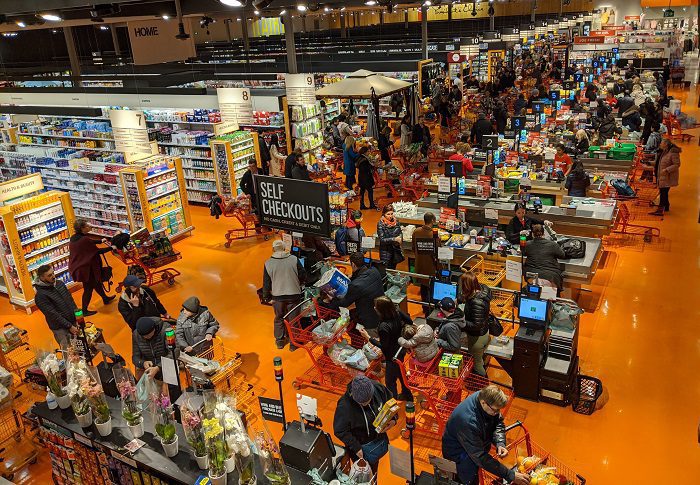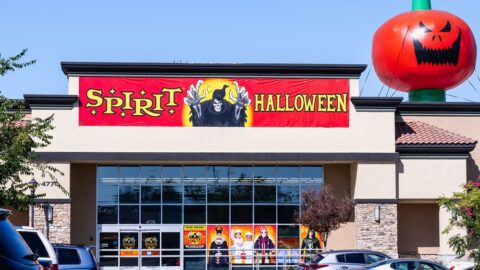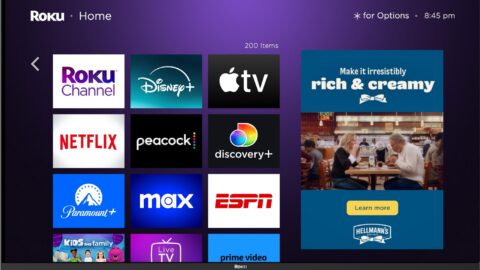The global financial shocks that started in 2020 have accelerated in 2022, with causes ranging from Russia’s invasion of Ukraine to recurring COVID-19 outbreaks and ongoing supply chain challenges. The latest issue is inflation, which is running at a 40-year high in the U.S., forcing retailers to grapple with remaining relevant to increasingly price-sensitive consumers.
The Bureau of Labor Statistics’ May 2022 Consumer Price Index showed an increase of 8.6%, the largest 12-month rise since the period ending in December 1981, and on June 15, 2022 the Federal Reserve raised its benchmark interest rate for the third time this year with a .75 percentage point increase — the largest since 1994 — to help tame inflation while (hopefully) not tipping the country into a recession.
Illustrating the consumer response to the Fed’s activity, on June 15 the U.S. Census Bureau released its advance monthly sales for May 2022 retail and food services, showing a .3% decrease from April, which was revised to reflect a .7% increase.
Over a longer-term period, the Fetch Price Index Inflation Report: Record Breaking Grocery Prices Changing How Consumers Shop, which examined 375,000 shoppers’ habits over 195 million in-store and ecommerce purchases over 24 months, showed that consumers were purchasing fewer items, with a year-over-year decline in units per trip of 10.2%. Yet per-trip spending increased, indicating that shoppers are spending more but getting less for their money.
While retailers can do little to affect world events and macro inflation, they can make use of an often underused asset they already have: customer data. Analyzing this data — particularly the new troves of information available from the ecommerce surge of the past two years — can help retailers understand where price sensitivities are strongest and for which customer groups, and also help them be smarter about using discounts and promotional offers to keep shoppers from defecting to lower-price competitors.
During The Kroger Co.’s Q1 2022 earnings call on June 16, Rodney McMullen, the company’s Chairman and CEO, relayed the importance of identifying the distinctive buying habits of different shoppers in order to help them make their precious dollars stretch the farthest.
“While customers continue to cook more, we are seeing different shopping behaviors based on how individual customers are experiencing the current inflationary environment,” said McMullen. “Many customers continue to shop premium products throughout the store, including Private Selection, Murray’s cheese and Deluxe Meal Solutions. For other customers, whose budgets are more directly impacted by food and fuel inflation, they are actively looking for ways to save. We’re doing everything we can to help this customer stretch their budgets.”
Dig Into the Data
Retailers that know their customers and can anticipate their needs through more personalized experiences will remain top of mind for consumers. Shoppers want to feel seen and have their financial challenges recognized, and that is only possible with careful analysis of customer data.
“Retailers sit on massive troves of data and almost none of them use it,” said Peter Curran, General Manager at cloud commerce app Lucidworks in an interview with Retail TouchPoints. “[They should] take that data and put it to use to automate the customer experience to drive insights into what consumers really prefer and what they will engage with. Instead of looking at inflation in the weaker retail sector as a thing they’re victimized by, get retailers to use the opportunity to become more automated and responsive to consumer desires by paying attention to the massive amounts of data that they’ve gathered.”
Curran believes retailers should ask themselves certain questions to uncover consumer needs and priorities when examining data, including:
- What are consumers seeing?
- How are shoppers asking for things?
- What do customers see when they ask for things?
- What features are guests engaging with on the products they see?
- After engaging with products, do customers add them to the cart?
- What do customers consume and buy?
- Do consumers return the entire product or part of their purchases? and
- Are consumers likely to purchase an accessory for the item after purchase?
“If you’re following all of those data, then you can have a much more dynamic response to a macro event like inflation or like supply chain, where the consumer will lead you to the right answer as opposed to trying to predict what you need to put in front of them,” Curran said.
Understanding the potential of its data collection, Kroger continues to examine its customers’ shopping habits, which allows the company to shift with demand even as the retail climate changes rapidly. For example, through updated technology, Kroger improved pickup wait time by 20% and reduced delivery time as it grew capacity to meet customer needs.
“Our data science platform provides unique insights that create personalized customer experiences,” said McMullen. “Our broad-based data science approach helps us determine how to best implement price, promotion and display. We are focused on delivering incredible value to our customers through relevant, personalized offers in fuel rewards. Our loyal customers are using our fuel rewards program now more than ever.”
A considerable amount of investment in data science by the Kroger team has afforded rewarding results. Despite basket size decreasing due to economic conditions, the company reported first-time engagement of more than 600,000 incremental households during Q1.
“We are investing where it matters most to our customers and are using our proprietary data to deliver additional value through personalization,” said Gary Millerchip, SVP and CFO at Kroger during the June 16 call. “We will continue to leverage these proven and unique capabilities to help our customers manage their grocery budgets more effectively and maintain a strong value proposition relative to our competitors, as we believe inflation will remain front of mind for many of our customers for the remainder of 2022.”
Fewer Inflation Impacts for Lower-Price Retailers
The Fetch report also noted that bargain retailers experienced less disruption in basket size, reflecting the ability of these businesses to add value by aligning with the consumer priority of saving while shopping.
“Bargain retailers do a great job of actively showing shoppers exactly how to maximize things like temporary price reductions and promotional offers in order to get the largest discount,” explained Wes Schroll, CEO and Founder of rewards app Fetch Rewards in an interview with Retail TouchPoints. “They’re also good at cutting costs, and they tend to provide budget-savvy marketing content that appeals to conscious consumers. Bargain and non-bargain retailers alike can benefit from gaining a better understanding of their customers, and by deploying targeted offers that provide a better ROI than across-the-board discounts.”
According to Mike Graziano, Consumer Products Senior Analyst at consulting firm RSM, shoppers are retaining greater financial strength when compared to other financially challenging periods such as 2007. And amid this current financial turbulence, retailers must remain aware of how inflation is impacting consumers at different income levels. “It really comes down to income level,” said Graziano in an interview with Retail TouchPoints. “If you’re in the lower income tier, a 10% increase in your grocery bill can be very impactful for your discretionary spending. In middle income and upper income [groups] there is not as much of an impact, but there’s still that consideration.”
Additional research shows generational differences in how consumers are responding to inflation. In its quarterly Consumer Trends Report, ecommerce platform Jungle Scout reported that during Q2, 59% of all consumers opted for more affordable brands to save money, with 35% of millennials opting for a less expensive label. Baby Boomers were almost 2X as likely than millennials to bypass spending money on certain products in order to save.
Some Good News: Optimism About Back-to-School Season
With the back-to-school season kicking off and holiday around the corner, retailers are making room for new goods by pushing discounts on current inventory, with tools such as the price reductions announced by Target earlier in June. The bright side is that the 2022-23 academic year affords greater optimism regarding consistent, in-person learning in schools across the U.S. This positive outlook may blunt the impact of higher prices due to inflation, helped by retailers leveraging promotional discounts.
“What we’re starting to see as we get into the back-to-school season are higher levels of promotional discounting than we’ve seen for the last two years,” said Keith Jelinek, Managing Director of Retail Performance Improvement Practice at consulting firm Berkeley Research Group in an interview with Retail TouchPoints. “Whether it’s apparel, or hard goods like paper goods and notebooks, or pens, pencils and backpacks, price increases on all those types of products have been put through. Consumers are going to have to make some choices, but at the same time retailers are going to be very concerned about selling through that product. We’re going to see much higher discounts on the product. The consumer should win in that matter.”
Price Likely to be a Factor Through Holiday 2022
It’s likely that holiday shoppers will either still be cutting costs, or will remain sensitive to what they perceive as high prices, as they continue to deal with inflationary impacts from the first half of the year. Additionally, there is the possibility that the overall financial environment will have declined further by that time. Victor Lee, President of sales and marketing solutions provider Advantage Unified Commerce, noted that retailers must recognize consumer comparison shopping will be more heavily weighted according to value and cost this holiday season rather than focused on a long list of fresh products.
“We may not see more new flavors and we may not see new products that take up a lot of space on shelves, because retailers have to understand that consumers can compare giving up this money,” said Lee in an interview with Retail TouchPoints. “[They are likely to be asking themselves], What am I losing on the other side? That’s just the world we live in. And then they’re going to value compare, which is normal anyway. It’s just more effective now.”















